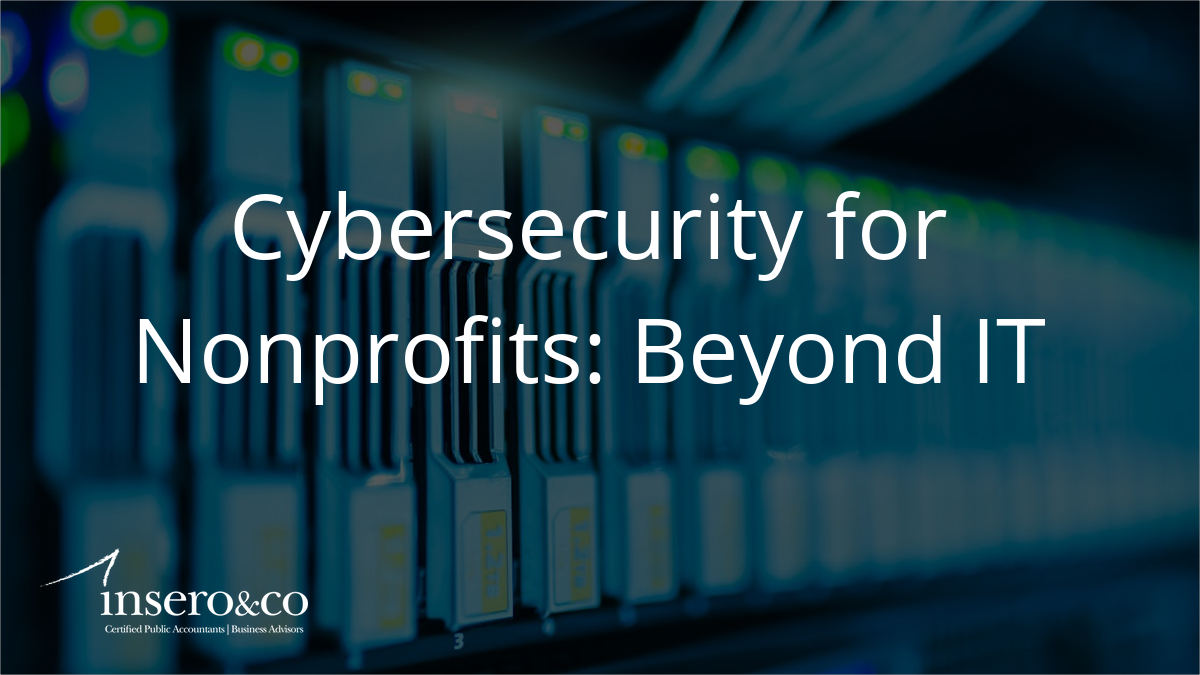TAX ALERT |
Authored by RSM US LLP
On March 1, 2021, the IRS issued much anticipated guidance related to the Employee Retention Credit (ERC) in Notice 2021-20.
Under the Taxpayer Certainty and Disaster Tax Relief Act of 2020 (Relief Act), Congress retroactively made changes to the ERC, as we previously discussed. The most significant change is that companies that received a Paycheck Protection Program (PPP) loan are now eligible to claim the ERC retroactively in 2020. The IRS issued this Notice to address the areas in need of clarity with respect to this interaction, as well as to formalize many of the previously issued IRS FAQs (which have not yet been updated on the FAQ site but now contain a legend alerting taxpayers of the Notice).
Items of note in the Notice
Notably, the Notice only covers the 2020 implications for the Employee Retention Credit (ERC), it does not address changes made for 2021 from the Relief Act, although many of the items covered will apply to both periods as much of the rules work the same for both years. Businesses should expect further guidance to address other 2021 issues stemming from the Relief Act expansion and extension of the credit.
In addition, the Notice primarily uses language that mirrors that published in earlier FAQs while giving taxpayers more authoritative guidance to rely on when taking positions with respect to the credit. Much of the Notice is written in question and answer format similar to the FAQs, structured with very similar categories, and using many of the same examples. A few areas addressed in the Notice provide more insight than the previous FAQs such as:
- What is a nominal portion of the business that will be considered a partial suspension? An essential employer may qualify for the ERC if it has a partial suspension of operations that is more than a nominal portion of its business and due to a government order. Nominal was not previously defined. The Notice provides that a portion of the business that makes up 10% of a business’s gross receipts or 10% of the total number of hours of service performed by the employer’s employees is deemed to be more than nominal. Essentially this provides a safe harbor for treating a portion of a business as more than nominal, and if not using that safe harbor, a facts and circumstances general rule still applies to determine what is nominal.
- What is considered comparable operations? Under the previous FAQs and the Notice, employers that are able to continue comparable operations even though they were subject to government orders, are not considered to be fully or partially suspended by government orders. The Notice added factors to consider in determining whether operations are considered to be comparable to operations prior to closure including telework capabilities, the amount of portable work, the role of the physical work space, and the transition time to be able to telework (with transitions longer than two weeks being considered significant).
- What modifications are considered to have more than a nominal impact? While the examples of modifications from the FAQs are repeated in the Notice, the Notice also adds factors to consider whether modifications have more than a nominal effect. Those factors include limited occupancy, appointment-only services that previously offered walk-ins, restrictions on certain services such as buffets or requiring face coverings. Although these modifications are listed as examples, facts and circumstances still apply to determine whether they have more than a nominal impact. Similar to above, a 10% impact on the ability to provide services is deemed to be more than nominal as a safe harbor.
- What documentation should businesses keep with respect to the ERC? The Notice provides that employers should maintain adequate records for at least four years to support credits claimed including documentation showing eligibility (e.g. orders that suspended operations, records supporting more than nominal impacts or proof of gross receipts levels), records of qualified wages by employee (including support for time not working for large employers), allocable qualified health plan expenses, determination of aggregated group status and copies of any applicable forms claiming the credit.
Many of the other items addressed in the Notice do not contain additional detail beyond the FAQs despite there being a lot of ambiguity left in the FAQs. For example, the Notice does not further clarify the definition of full-time employee or the impacts of mergers, acquisitions or divisions that change the aggregated group during applicable periods. Likewise, the Notice does not give further relief for the section 280C(a) income tax deduction implication.
Nonetheless, having certain items stated in an IRS Notice, which can be relied upon, provides additional clarity where there has been some confusion, for example, stating that a larger employer cannot count paid time off as qualified wages. In addition, the Notice clarifies that employers do need to file Form 941-X for earlier quarters in which the qualified wages were paid to claim the credit for those quarters.
PPP forgiveness interaction
Obviously, the most significant guidance many taxpayers were awaiting relates to the interaction for those entities that took PPP loans that were, or will be, forgiven and that cannot use the same wages for both purposes. The Notice provides many examples with respect to various scenarios an employer may have with respect to its PPP forgiveness amounts and payroll expenses reported on the PPP forgiveness application.
The Notice provides that an employer that received a PPP loan is deemed to have elected not to take the ERC for the amount of payroll costs reported on the PPP forgiveness application up to (but not exceeding) the minimum amount of payroll costs sufficient to support the amount of PPP loan forgiveness. Any qualified wages that are not included in the PPP payroll costs, or that exceed the amount of the PPP forgiveness amount, are still eligible for the ERC, as an election is not deemed to have been made for those qualified wages.
For example, an employer that had a $200,000 PPP loan and that reported $250,000 of eligible payroll costs on its PPP forgiveness application is deemed to have made an election out of the ERC for the $200,000 (up to the amount of the forgiveness), but the remaining $50,000 that exceeds the PPP loan amount is not deemed to have been elected out of ERC and remains eligible for ERC.
Unfortunately, though, the Notice provides that if taxpayers already filed for PPP forgiveness and did not include other eligible expenses on its PPP forgiveness application, the deemed ERC election cannot be reduced by the amount of eligible expenses that could have been claimed but were not claimed on the PPP forgiveness application.
For example, an employer that had a $200,000 PPP loan and showed $200,000 of payroll costs and no other eligible expenses on its forgiveness application is deemed to have elected out of the ERC with respect to the $200,000, even though it may have had $70,000 of other eligible expenses that could have been reported on the PPP forgiveness application.
For now, there is no mechanism for PPP borrowers that have already submitted forgiveness applications to amend the payroll and nonpayroll costs included on the forgiveness application. With the amount of PPP recipients now eligible to claim the ERC it remains to be seen whether the SBA will issue procedures on amending forgiveness claims.
To the extent a taxpayer has not yet applied for PPP forgiveness, a taxpayer might want to consider whether to include some other expenses, not just payroll expenses, to support the forgiveness, in order to claim more wages for ERC credits.
Takeaway
The additional light shone on the Employee Retention Credit (ERC) by the changes in the Relief Act have caused many taxpayers to revisit the applicability of the ERC for 2020, both those who originally were ineligible due to PPP loans and those who were not but were unaware of the broader partial suspension rules for eligibility because businesses had so many items to focus on and adapt to during 2020. The Notice provides welcome guidance that can be relied upon, but also leaves many aspects of the credit up to facts and circumstances analyses, which still require careful thought and documentation. Businesses should work with qualified advisors to understand the guidance, take reasonable positions based upon that guidance and have adequate documentation of those positions. In many instances, following a careful process such as this will result in significant liquidity opportunities for employers experiencing business impacts from COVID-19.
Do you have questions or want to talk?
Call us at (800) 232-9547 or fill out the form below and we’ll contact you to discuss your specific situation.
This article was written by Anne Bushman and originally appeared on 2021-03-02.
2020 RSM US LLP. All rights reserved.
https://rsmus.com/what-we-do/services/tax/compensation-and-benefits/guidance-issued-for-employers-claiming-the-employee-retention-cr.html
The information contained herein is general in nature and based on authorities that are subject to change. RSM US LLP guarantees neither the accuracy nor completeness of any information and is not responsible for any errors or omissions, or for results obtained by others as a result of reliance upon such information. RSM US LLP assumes no obligation to inform the reader of any changes in tax laws or other factors that could affect information contained herein. This publication does not, and is not intended to, provide legal, tax or accounting advice, and readers should consult their tax advisors concerning the application of tax laws to their particular situations. This analysis is not tax advice and is not intended or written to be used, and cannot be used, for purposes of avoiding tax penalties that may be imposed on any taxpayer.
RSM US Alliance provides its members with access to resources of RSM US LLP. RSM US Alliance member firms are separate and independent businesses and legal entities that are responsible for their own acts and omissions, and each are separate and independent from RSM US LLP. RSM US LLP is the U.S. member firm of RSM International, a global network of independent audit, tax, and consulting firms. Members of RSM US Alliance have access to RSM International resources through RSM US LLP but are not member firms of RSM International. Visit rsmus.com/aboutus for more information regarding RSM US LLP and RSM International. The RSM(tm) brandmark is used under license by RSM US LLP. RSM US Alliance products and services are proprietary to RSM US LLP.

Insero & Co. CPAs, LLP is a proud member of RSM US Alliance, a premier affiliation of independent accounting and consulting firms in the United States. RSM US Alliance provides our firm with access to resources of RSM US LLP, the leading provider of audit, tax and consulting services focused on the middle market. RSM US LLP is a licensed CPA firm and the U.S. member of RSM International, a global network of independent audit, tax and consulting firms with more than 43,000 people in over 120 countries.
Our membership in RSM US Alliance has elevated our capabilities in the marketplace, helping to differentiate our firm from the competition while allowing us to maintain our independence and entrepreneurial culture. We have access to a valuable peer network of like-sized firms as well as a broad range of tools, expertise, and technical resources.
For more information on how Insero & Co. CPAs can assist you, please call (800) 232-9547.




